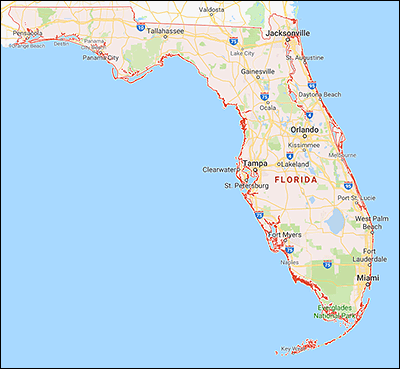By Jim Ellis — Friday, June 13, 2025
House
 It appears that both major political parties have problems to overcome in order to achieve success in the 2026 congressional midterm elections.
It appears that both major political parties have problems to overcome in order to achieve success in the 2026 congressional midterm elections.
Earlier this month, we produced a Political Update that found Democratic voter registration is down in all 31 states that record a voter’s political affiliation (Democrats Down in All States). In comparison, Republican registration under the same time parameters is up as a percentage to the whole in 23 of the 31 states. The Independent, or Non-affiliated option is up in 18 of the party registration state universes.
Since the Democratic downturn appears at least partially related to a reduction in their traditional share of younger and new voters, this is a serious trend that the party leaders must address.
The Republicans, however, also have a potential enthusiasm problem — or perhaps an organizational problem — which could be a warning sign for the 2026 midterm elections.
The Down Ballot political blog mathematicians have been researching the special elections held after the 2024 presidential contest and have illustrated that Republican performance in almost every instance has significantly underperformed the baseline that President Donald Trump set last November.
So far in 2025, there have been 29 special elections for state legislature (27) and the US House of Representatives (2) in 12 states. In two instances, state Senate seats in Iowa and Pennsylvania, Democratic candidates converted traditional GOP districts and seats where, according to The Down Ballot calculations, the Republican candidate underperformed the combined Trump-Kamala Harris total by a net 25 (Iowa) and 16 (Pennsylvania) percentage points.
The mean average Republican underperformance factor in all 29 special election districts is 16.4 percent under Trump’s performance against Harris, and 12.2 percent below his standing against President Joe Biden in 2020.
Earlier this week, on Tuesday, June 10, six state legislative special elections were held — three in Florida, two in Oklahoma, and one in Massachusetts. The result pattern was mixed. In Oklahoma, though in a strongly Democratic district, the Republican nominee, again according to The Down Ballot statisticians, ran a whopping net 50 percentage points behind the combined Trump vs. Harris 2024 recorded vote.
Looking at the other Oklahoma state House special election, the Republican candidate won the seat but fell below the Trump vs. Harris combined percentage by a net 13 points.
Yet, in a Massachusetts state Senate special election, the Republican candidate overperformed, losing the election by just 21 votes, which proved a net five percentage point increase over the 2024 presidential result.
Republican candidates held all three seats the party risked in the June 10 Florida special elections, one in the state Senate and two in the state House. Yet, they again fell below the Trump Republican performance standard, this time by a net nine, 11, and 21 percentage points.
The question that must be asked in reflecting on this data is whether the Republican candidates are underperforming, or is President Trump simply an over-achiever? The answer could be a combination of the two scenarios. What has become clear, however, is that a Trump voter is not necessarily a Republican partisan, and many are not habitual voters. This means a significant number of individuals within the Trump coalition are simply unlikely to participate in a special election even though they come to the polls when the President himself is on the ballot.
Furthermore, it is also unlikely that the Republican special election underperformance is a result of people changing their allegiance as a protest to the Trump Administration. Rather, it is probable that the most prolific reason for the GOP’s lesser 2025 track record is failing to convince enough of their coalition to return to the polls for the irregular and under-publicized elections.
Pertaining to the 2026 congressional midterms, both parties must return to basics in order to energize their coalitions. Democrats must find a solution to their young and new voter problem, while Republicans must develop better messaging to convince the casual Trump voter to cast a ballot to help their President’s allies.






